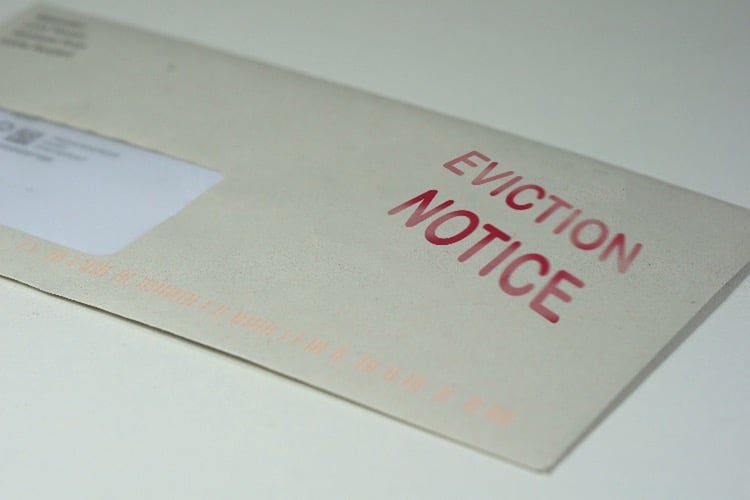As monthly rents in many markets continue to rise, many landlords are beginning to lease to multiple tenants. Renting to more than one tenant can help a landlord to find qualified renters, get property leased faster, and help each individual tenant save money on rent.
But what happens if there are 2 tenants on the lease and one of them decides to leave?
In this article, we’ll discuss options a landlord has when one tenant leaves, along with tips for landlords renting to multiple tenants.
Key Takeaways
- If one tenant leaves, the remaining tenant may be liable for the full amount of monthly rent.
- A landlord may review the rent-to-income ratio of the remaining tenant if the tenant wants to stay and keep paying the rent.
- New roommates should be screened before being added to the lease agreement.
- A roommate agreement can help tenants establish how the rent will be shared and how the property will be taken care of.

What to do when one tenant leaves
The first step a landlord or property manager can take when one tenant leaves is to review the lease agreement.
According to the legal resource website Nolo.com, if both tenants have signed the lease then most of the time the tenants are jointly and severally liable for paying the rent and fulfilling the terms and conditions of the lease agreement. However, you may wish to consult with an attorney for guidance interpreting your lease in accordance with the laws of your jurisdiction.
Under joint and several liability, if one roommate leaves, the landlord can still look for the remaining tenant to pay the monthly rent in full until the lease ends, even if the co-tenants had an agreement among themselves to share the rent.
However, just because the landlord has the right to seek the total monthly rent from the remaining tenant doesn’t necessarily mean that the tenant who stays will be able to pay.
There are several questions a landlord can ask the remaining tenant before deciding what steps to take:
- Does the remaining tenant want to stay now that the roommate has left, or is the tenant thinking about leaving as well?
- Is the remaining tenant aware that they are liable for paying the total monthly rent until the end of the lease term?
- Can the remaining tenant afford to pay the monthly rent in full now that one tenant on the lease has left?
- Does the remaining tenant have another potential roommate that they would like to invite to move in?
Now let’s review the most common situations that can occur after one tenant leaves:
1. Remaining tenant keeps paying the rent
The ideal situation could be that the remaining tenant continues to pay the rent through the term of the lease. But even though the tenant says they can pay the rent in full, it may be a good idea to pull the tenant’s file and review the reports when the tenant was originally screened.
One important thing to review is the tenant’s rent-to-income ratio, which compares the monthly rent to the tenant’s gross monthly income:
- Rent-to-income ratio = Monthly rent / Gross monthly income
- Example: $1,500 monthly rent / $5,000 gross monthly income = 0.3
Although average rent-to-income ratios vary from one city to the next, most landlords look for a rent-to-income ratio of at least 0.3, meaning that 30% of the tenant’s monthly income is used to pay the rent.
By reviewing the tenant’s rental application, a landlord can determine how much of the tenant’s income will be used to pay the monthly rent now that one tenant on the lease has left.
If both tenants had a combined gross monthly income of $5,000 and the remaining tenant only has a gross monthly income of $3,000, the revised rent-to-income ratio would be:
- $1,500 monthly rent / $3,000 gross monthly income from remaining tenant = 0.5
In other words, 50% of the remaining tenant’s income will be used to pay the rent. Depending on the tenant’s lifestyle and other expenses, there may not be a lot of money left to pay for utilities, groceries, car and credit card payments, and other expenses.
So, even though the remaining tenant says they can pay the monthly rent in full, there’s the possibility that it may be wishful thinking.

2. Tenant looks for another roommate
Another option is to allow the tenant to find a new roommate. Let the remaining tenant know that a new roommate needs to go through tenant screening, and that employment and rental history will be verified.
Basic tenant screening steps include:
- Completing a rental application
- Running a background check, credit report, and rental history
- Employment verification
- Speaking with former landlords
One of the main differences between marketing a vacant property to a new tenant and allowing the remaining tenant to find a roommate is that the landlord may not have a lot of options to choose from.
As a landlord, you don’t want to have to find another roommate for the remaining tenant, but you do want to make sure the new roommate is qualified to rent the home.
Also, as with any other tenant, the Federal Fair Housing Act prohibits landlords from screening or denying tenants based on the protected classes of sex, familial status, national origin, color, race, religion, and disability. States and municipalities may extend protections to additional classes.
3. Remaining tenant willingly leaves
A third possible option a landlord has when one tenant leaves is to ask the remaining tenant to leave as well. Before taking this step, it’s a good idea to review the state landlord-tenant laws to understand the rights that a landlord has.
For example, if the tenant’s rent-to-income ratio is 0.5 or higher, the remaining tenant may simply be unable to pay the monthly rent. The tenant probably knows it, and the landlord does too.
Instead of facing the possibility of having to evict the remaining tenant for non-payment of rent, having the tenant leave could be a win-win situation for the tenant and the landlord. After an agreement is reached with the tenant, put everything in writing, including the required move-out date.
On the day the tenant leaves, walk through the property with the tenant and complete a move-out checklist.
By comparing the move-out checklist to the move-in checklist completed when the tenants moved in, a landlord can determine if there is any damage caused by the tenants above and beyond normal wear and tear. If there is, a landlord may be able to use part of all of the tenants’ security deposit to pay for damage.
After reviewing the state landlord-tenant laws or speaking with the property manager, a landlord can better understand how to handle the security deposit, how to account for any deductions, and the timeframe for returning the remaining deposit to the tenants.

4. Landlord needs to evict
When one tenant on the lease leaves and the other tenant can’t pay the rent and won’t willingly leave, a landlord may have no other option than to evict the remaining tenant. Before beginning an eviction, many real estate investors hire a real estate lawyer who specializes in residential evictions to help make sure that all of the rules are followed.
Although the rules for evicting a tenant vary from state to state, most residential evictions follow similar steps:
- Have a valid reason for evicting the tenant, such as non-payment of rent.
- Speak with the tenant to see if they are willing to leave, perhaps by offering cash for keys.
- Serve the tenant with a written eviction notice that gives the tenant the required amount of time to pay the past due rent in full.
- Sue for an eviction by paying a court filing fee and scheduling a hearing.
- Prepare for the court hearing by gathering documents to document the breach of the lease, including the original lease, rent payment records, and copies of correspondence with the tenant.
- Evict the tenant after obtaining a court order by having local law enforcement visit the property and physically remove the tenant, if necessary.
Then, collect on any past due rent and cost of damages caused by the tenant. Many landlords hire a collections agency to file a judgment, and garnish the wages and other assets of the tenants until any money owed has been collected.
Tips for renting to multiple tenants
TurboTenant is a company that helps independent landlords to screen tenants and collect rent payments online. Recently the company published these 8 tips for landlords who lease to multiple tenants:
- Encourage roommate agreements between tenants to establish expectations and responsibilities for paying the rent and keeping the property clean.
- Advise the tenants that the actions of one tenant can affect all of the tenants, which means if one tenant violates the lease all of the tenants may be held responsible.
- Do not allow the tenant to sublease in the rental agreement to prevent unauthorized roommates who have not been thoroughly screened by the landlord.
- Include a joint and several liability clause in the lease agreement so that every tenant who signed the lease is responsible for the total monthly rent.
- Do not divide security deposits between tenants, and return the security deposit in one check only at the end of the lease.
- Encourage the tenants to appoint one person who will serve as the main point of contact for maintenance requests and other communication between the tenant and the landlord.
- Thoroughly screen each tenant by running a credit report, background check, and rental history report.
- Require the tenants to obtain renters insurance (if the state landlord-tenant laws allow) to help protect the tenant if their belongings are damaged or stolen, or if the property becomes uninhabitable for a short period of time.
Final thoughts
When two tenants are on the lease and one tenant leaves, the remaining tenant is generally responsible for paying the monthly rent in full until the end of the lease. By making each tenant who signs the lease jointly and severally liable, landlords can help to protect themselves when leasing to multiple tenants.
If one tenant leaves, options for landlords to consider include having the remaining tenant pay the rent, allowing the tenant to find another roommate, or asking the remaining tenant to leave.









